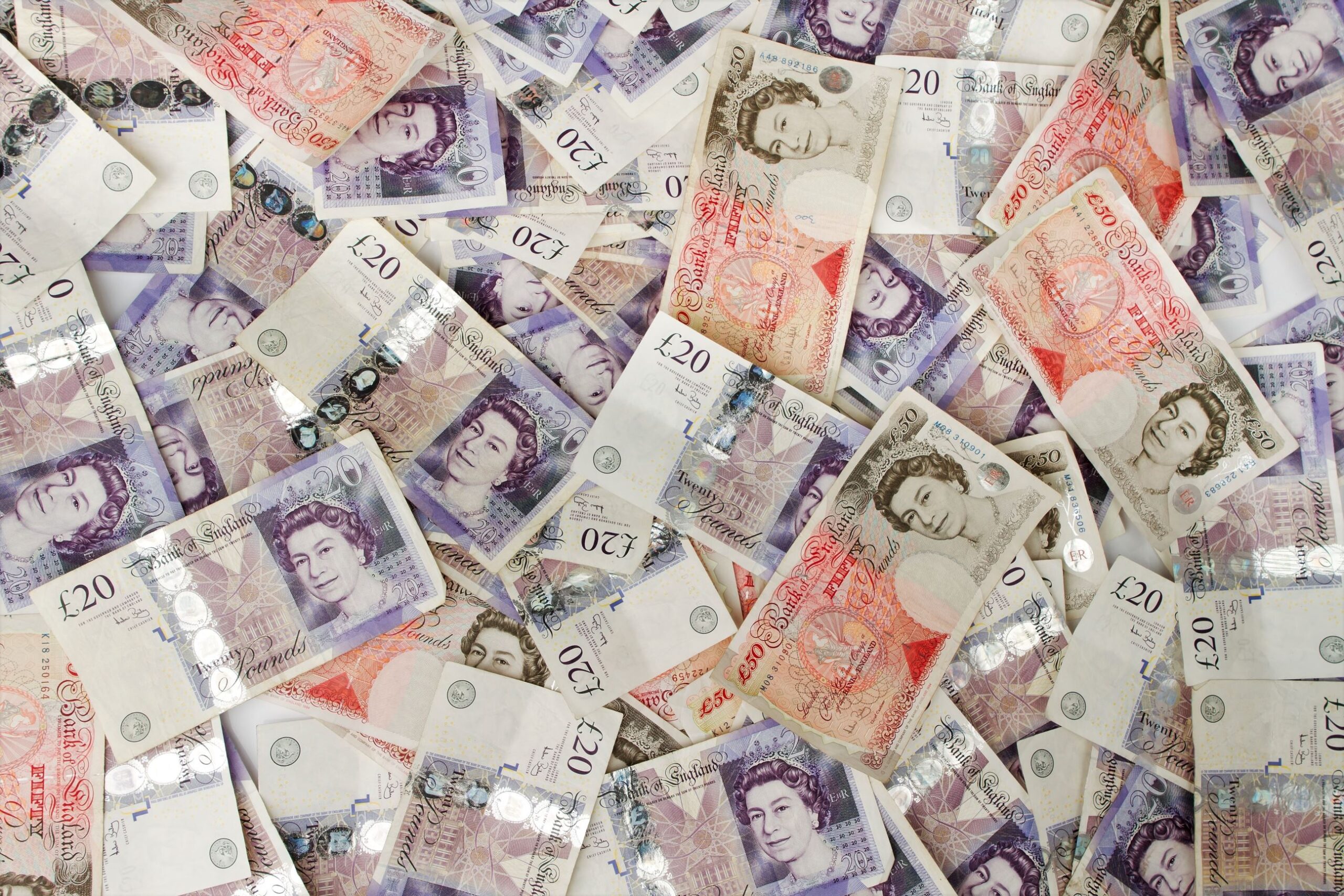 A recent report published by the High Pay Centre shows that the median annual CEO pay of the FTSE 100 companies rose by 15.7% in 2022, from £3.38 million in 2021 to £3.91 million – double the UK CPIH inflation rate of 7.9%. Average total pay across the whole economy grew by just 6.0%, representing a real pay cut of nearly 2%.
A recent report published by the High Pay Centre shows that the median annual CEO pay of the FTSE 100 companies rose by 15.7% in 2022, from £3.38 million in 2021 to £3.91 million – double the UK CPIH inflation rate of 7.9%. Average total pay across the whole economy grew by just 6.0%, representing a real pay cut of nearly 2%.
The pay of top US CEOs is higher still. The median annual pay of S&P 500 CEOs in 2022 was a massive $14.8 million (£11.7 million). However, UK top CEOs earn a little more than those in France and Germany. The median pay of France’s CAC40 CEOs was €4.9 million (£4.2 million). This compares with a median of £4.6 million for the CEOs of the top 40 UK companies. The mean pay of Germany’s DAX30 CEOs was €6.1 million (£5.2 million) – lower than a mean of £6.0 million for the CEOs of the top 30 UK companies.
The gap between top CEO pay and that of average full-time workers narrowed somewhat after 2019 as the pandemic hit company performance. However, it has now started widening again. The ratio of the median UK CEO pay to the median pay of a UK full-time worker stood at 123.1 in 2018. This fell to 79.1 in 2020, but then grew to 108.1 in 2021 and 118.1 in 2022.
The TUC has argued that workers should be given seats on company boards and remuneration committees that decide executive pay. Otherwise, the gap is likely to continue rising, especially as remuneration committees in specific companies seek to benchmark pay against other large companies, both at home and abroad. This creates a competitive upward push on remuneration. What is more, members of remuneration committees have the incentive to be generous as they themselves might benefit from the process in the future.
Although the incomes of top CEOs is huge and growing, even if they are excluded, there is still a large gap in incomes between high and low earners generally in the UK. In March 2023, the top 1 per cent of earners had an average gross annual income of just over £200 000; the bottom 10 per cent had an average gross annual income of a little over £8500 – just 4.24% of the top 1 per cent (down from 4.36% in March 2020).
What is more, in recent months, the share of profits in GDP has been rising. In 2022 Q3, gross profits accounted for 21.2% of GDP. By 2023 Q2, this had risen to 23.4%. As costs have risen, so firms have tended to pass a greater percentage increase on to consumers, blaming these price increases on the rise in their costs.
Life at the bottom
 The poor spend a larger proportion of their income on food, electricity and gas than people on average income; these essential items have a low income elasticity of demand. But food and energy inflation has been above that of CPIH inflation.
The poor spend a larger proportion of their income on food, electricity and gas than people on average income; these essential items have a low income elasticity of demand. But food and energy inflation has been above that of CPIH inflation.
In 2022, the price of bread rose by 20.5%, eggs by 28.9%, pasta by 29.1%, butter by 29.4%, cheese by 32.6% and milk by 38.5%; the overall rise in food and non-alcoholic beverages was 16.9% – the highest rise in any of the different components of consumer price inflation. In the past two years there has been a large increase in the number of people relying on food banks. In the six months to September 2022, there was a 40% increase in new food bank users when compared to 2021.
As far as energy prices are concerned, from April 2022 to April 2023, under Ofgem’s price cap, which is based on wholesale energy prices, gas and electricity prices would have risen by 157%, from £1277 to £3286 for the typical household. The government, however, through the Energy Price Guarantee restricted the rise to an average of £2500 (a 96% rise). Also, further help was given in the form of £400 per household, paid in six monthly instalments from October 2022 to March 2023, effectively reducing the rise to £2100 (64%). Nevertheless, for the poorest of households, such a rise meant a huge percentage increase in their outgoings. Many were forced to ‘eat less and heat less’.
 Many people have got into rent arrears and have been evicted or are at risk of being so. As the ITV News article and videos linked below state: 242 000 households are experiencing homelessness including rough sleeping, sofa-surfing and B&B stays; 85% of English councils have reported an increase in the number of homeless families needing support; 97% of councils are struggling to find rental properties for homeless families.
Many people have got into rent arrears and have been evicted or are at risk of being so. As the ITV News article and videos linked below state: 242 000 households are experiencing homelessness including rough sleeping, sofa-surfing and B&B stays; 85% of English councils have reported an increase in the number of homeless families needing support; 97% of councils are struggling to find rental properties for homeless families.
Financial strains have serious effects on people’s wellbeing and can adversely affect their physical and mental health. In a policy research paper, ‘From Drained and Desperate to Affluent and Apathetic’ (see link below), the consumer organisation, Which?, looked at the impact of the cost-of-living crisis on different groups. It found that in January 2023, the crisis had made just over half of UK adults feel more anxious or stressed. It divided the population into six groups (with numbers of UK adults in each category in brackets): Drained and Desperate (9.2m), Anxious and At Risk (7.9m), Cut off by Cutbacks (8.8m), Fretting about the Future (7.7m), Looking out for Loved Ones (8.9m), Affluent and Apathetic (8.8m).
The majority of the poorest households are in the first group. As the report describes this group: ‘Severely impacted by the crisis, this segment has faced significant physical and mental challenges. Having already made severe cutbacks, there are few options left for them.’ In this group, 75% do not turn the heating on when cold, 63% skip one or more meals and 94% state that ‘It feels like I’m existing instead of living’.
Many of those on slightly higher incomes fall into the second group (Anxious and At Risk). ‘Driven by a large family and mortgage pressure, this segment has not been particularly financially stable and experienced mental health impacts. They have relied more on borrowing to ease financial pressure.’
Although inflation is now coming down, prices are still rising, interest rates have probably not yet peaked and real incomes for many have fallen significantly. Life at the bottom has got a lot harder.
Articles
- FTSE 100 CEOs get half a million pound pay rise
- Call for reforms as median FTSE 100 chief executive pay topped £3.91m in 2022
- FTSE 100 bosses given average 16% pay rises
- Median pay for a FTSE 100 CEO increased from £3.38 million in 2021 to £3.91 million in 2022, the High Pay Centre said
- FTSE 100 bosses ‘given average pay rise of £500,000 in 2022’
- Big firm bosses’ pay rose 16% as workers squeezed
- Anxious and at risk? Britons fall into six cost of living groups, report finds
- From Drained and Desperate to Affluent and Apathetic
- To grasp the extent of inequality, look at the relatively well-off
- Growing inequality across Britain has left millions of families exposed to the cost-of-living crisis
- Earned income taxed twice as heavily as capital gains for some in UK, study finds
- Reducing inequality benefits everyone — so why isn’t it happening?
 Homeless families forced to live in tents and hotels as temporary accommodation runs out
Homeless families forced to live in tents and hotels as temporary accommodation runs out
High Pay Centre (21/8/23)
Sky News, Sarah Taaffe-Maguire (22/8/23)
Financial Times, Michael O’Dwyer, George Parker and Jim Pickard (21/8/23)
Morningstar, Alliance News (22/8/23)
The Guardian, Rupert Neate (22/8/23)
BBC News, Michael Race (22/8/23)
The Guardian, Robert Booth (29/7/23)
Which?, Nicole Chan, Katie Alpin and Ash Strange (29/7/23)
LSE blog, Gerry Mitchell and Marcos González Hernando (17/7/23)
Resolution Foundation, Lalitha Try (25/1/23)
The Guardian, Phillip Inman (20/8/23)
Nature, Editorial (16/8/23)
ITV News, Daniel Hewitt (22/8/23)
Reports
- Analysis of UK CEO Pay in 2022
- From Drained and Desperate to Affluent and Apathetic: understanding how the cost of living crisis is affecting UK households
High Pay Centre, Rosie Neville, Andrew Speke and Luke Hildyard (August 2023)
Which? Policy Report (July 2023)
Data
- EARN01: Average weekly earnings
- Effects of taxes and benefits on household income
ONS Dataset
ONS Dataset
Questions
- What are the arguments for and against giving huge pay awards to CEOs?
- What are the arguments for and against raising the top rate of income tax to provide extra revenue to distribute to the poor? Distinguish between income and substitution effects.
- What policies could be adopted to alleviate poverty? Why are such policies not adopted?
- Using the ONS publication, the Effects of taxes and benefits on UK household income, find out how the distribution of income between the various decile groups of household income has changed over time? Comment on your findings.